 Norway : Safety by City
Norway : Safety by City
Norway is a country located in the northernmost part of Europe and is actually the northernmost of the three Scandinavian countries.
Norway is best known for the complex network of fjords spreading along its west coast which stretches from the North Sea near Denmark and Scotland into the Arctic Ocean and shares borders with Finland, Sweden, and Russia.
This country boasts a gorgeous landscape shaped by the Ice Age, filled with mountains, waterfalls, forests on hills and valleys, and a long coastline with fjords, islands, and mountains growing directly from out of the water.
Norway is well known for its landscapes, mainly its fjords in the western part of the country that are long inlets, flanked on either side by tall mountains.
Apart from the fjords, the major part of the land consists of rocky wilderness…
… This leads to another interesting fact about Norway:
due to this rocky wilderness that takes up such a large part of the country, there are many, many huge, completely unpopulated areas (in time, converted to national parks) which makes Norway one of Europe’s most sparsely populated countries.
Warnings & Dangers in Norway

OVERALL RISK: LOW
Norway is very safe, generally. Crime rates are low and the most common form of crime is bicycle theft and break-ins. The biggest threat for tourists lies in the nature of Norway.

TRANSPORT & TAXIS RISK: LOW
Transport is, overall, very safe and reliable in Norway, but be careful on public transportation as it's the place where pickpockets operate.

PICKPOCKETS RISK: MEDIUM
There is some risk of encountering a pickpocket, especially in larger cities such as Oslo or Bergen. Apply the basic laws of precaution to avoid such a situation, and follow your common sense.

NATURAL DISASTERS RISK: MEDIUM
The biggest threats for tourists lie in nature. Always follow what the signs say, and the advice of authorities. Never approach glacier fronts, big waves, or waterfalls unless you know what you're doing, and do not go to Svalbard without a professional accompanying you.

MUGGING RISK: MEDIUM
Norway is mostly safe when it comes to mugging and kidnapping, but it is recommended that you avoid poorly lit and deserted streets and dangerous areas known for street crime.

TERRORISM RISK: MEDIUM
Even though there haven't been any terrorist attacks in Norway's recent history, they shouldn't be ruled out, especially since other European countries in its vicinity have been targeted, so it is best to remain vigilant and alert.

SCAMS RISK: MEDIUM
As in any tourist destination, there is a risk of getting scammed. Check your change twice, negotiate everything in advance, never pay upfront, and be wary of people trying to distract your offering you unsolicited help with your luggage or anything else, as it might be a trick to steal from you.

WOMEN TRAVELERS RISK: LOW
Single women shouldn't have any problems, although special vigilance is advised after dark. Avoid the inner east side of Oslo at night because it has become more dangerous during night hours in the past couple of years.
So... How Safe Is Norway Really?
Norway is a very safe country to travel to.
Its crime rates are low, and the most likely crimes that you’ll encounter are petty theft and car break-ins.
Still, you should be wary of pickpockets, since they are an increasing issue in larger cities and towns, especially during summer.
However, the problem with pickpockets is nowhere near other European top destinations so only a few precaution rules should minimize your chances of anything going wrong.
Always take care of your belongings and keep them close by your side or safely in your accommodation, and never leave them in a visible place of your car.
Also, make sure to lock your bike safely even for short periods of time.
The greatest threats to tourists in Norway are actually nature threats.
Every year, a number of tourists get hurt or even killed in the mountains or on the seas, usually due to not following given advice or signs with warnings along the way.
For example, avoid approaching a glacier front, big waves on the coast, or a big waterfall unless you know what you’re doing, and never walk on glaciers without proper training, equipment, or a professional to accompany you.
Special precaution is needed in Svalbard, where you should never go without someone with a weapon accompanying you.
There are polar bears on Svalbard that are a real and extremely dangerous threat for unprepared visitors, especially during summer when there are more polar bears in Svalbard than humans.
They are strong, quick, curious, and aren’t afraid of people, but will shy away at the sound of a gunshot.
How Does Norway Compare?
| Country | Safety Index |
|---|---|
| Norway | 85 |
| Morocco | 54 |
| Germany | 85 |
| Romania | 80 |
| Namibia | 71 |
| Netherlands | 75 |
| Chile | 79 |
| Mongolia | 71 |
| Qatar | 84 |
Useful Information

Visas
Most countries do not need a visa for any stays shorter than 90 days. Any longer than that, you might have to acquire a visa. Make sure your passport is valid at least six months past your planned date of return. If you are not sure about your visa status, visit www.doyouneedvisa.com which will let you know whether or not you need a visa based on your nationality and the country you want to visit.

Currency
Nordic Kroner is the official currency in Norway. Norway is very expensive so plan on spending between 150 and 250 dollars, including accommodation. ATMs are widely available and credit cards are accepted in most establishments, such as hotels and restaurants.

Weather
Norway is located along the same latitude as Siberia, Greenland, and Alaska, so the continual cold weather might be expected. However, the warming influences of the northern Gulf Stream allow this country to enjoy a fairly mild climate. The best time to visit, though, is during summer that lasts from June till August, since the winters are actually pretty cold.

Airports
Oslo Airport is the main international airport serving Oslo and is located 35 km northeast of Oslo. Oslo Airport is the main international airport in Norway and is the second-busiest airport in all Nordic countries.

Travel Insurance
Just like anywhere else, we recommend getting travel insurance when traveling to Norway, since it covers not only the costs of medical problems but also theft and loss of valuables.
Norway Weather Averages (Temperatures)
Average High/Low Temperature
| Temperature / Month | Jan | Feb | Mar | Apr | May | Jun | Jul | Aug | Sep | Oct | Nov | Dec |
|---|---|---|---|---|---|---|---|---|---|---|---|---|
| High °C | 1 | 1 | 5 | 11 | 17 | 21 | 23 | 21 | 16 | 10 | 4 | 1 |
| Low °C | -5 | -5 | -2 | 2 | 7 | 11 | 13 | 13 | 9 | 4 | 0 | -4 |
| High °F | 34 | 34 | 41 | 52 | 63 | 70 | 73 | 70 | 61 | 50 | 39 | 34 |
| Low °F | 23 | 23 | 28 | 36 | 45 | 52 | 55 | 55 | 48 | 39 | 32 | 25 |
Norway - Safety by City
| City | Safety Index |
|---|---|
| Bergen | 71 |
| Kristiansand | 81 |
| Oslo | 78 |
| Stavanger | 80 |
| Trondheim | 86 |
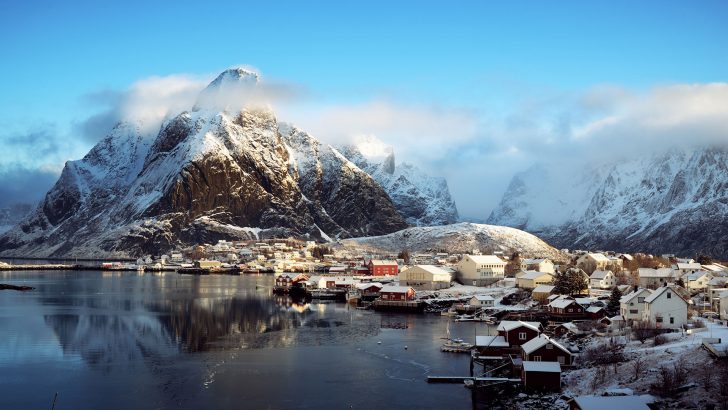

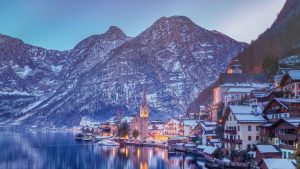
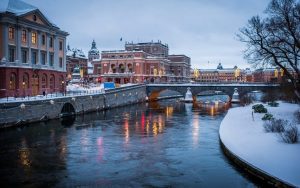
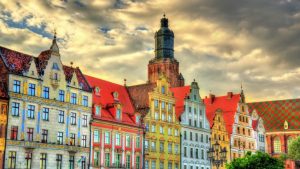
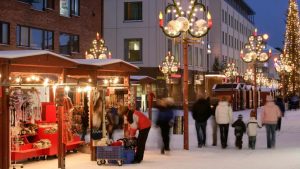

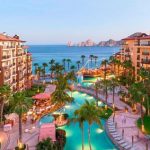
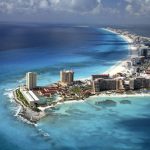
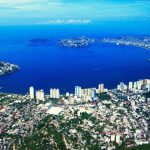
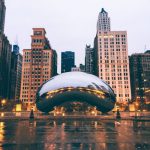
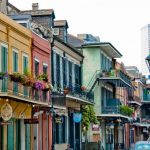
It was a terror attack in 2012 more than 80 people most kids were killed. It was a radical Norwegian that supports the anti-Islam movement.
Bruh, the Norway attacks of 22 Juli 2011
Dude, you are right about this one. stay safe!
a star taken off for bad food
I visited Norway 2 years ago. It was very safe. It was comparable to all the other Scandinavian countries in almost all respects except two: the cost to live there, and the food.
Norway was the most expensive out of all of the countries, with the possible exception of Denmark, which I didn’t stay long enough in to get a feel for.
However, the food at the restaurants was consistently below par, and it was in Norway, as well as the Czech Republic, which is also notorious for its bad food, that I got food poisoning. Maybe it has something to do with not refrigerating eggs? Who knows?
In many respects though, it was a beautiful, wonderful place, and also quite affluent. So, I’m not sure what all this business about “terrorism” or “pick-pockets,” or “muggins,” or “scams” relative to the other Nordic countries.
You probably went to one of the cheaper restaurants like Mcdonalds or Burger King
The Czech cuisine is awesome, and I’ve never had anything but great food experiences there (been there several times). In Norway, you can get anything from the cheapest kebab (that probably will give you food poisoning) to restaurants with three Michelin stars. I won’t know ‘par’ is to you, but I suspect this has more to do with your ability to find good restaurants than what is actually on offer.
if Norway isn't the safest country, then there aren't any safe countries
I know several countries with bad food, and Czechia is amongst them. At least norway has super healthy food, never did I see one single overweight chubby Norwegian. The women are all in perfect shape. Most delicious are the Fiskeburgers which you cannot get in any other country, maybe in name but not as a typical Norwegian dish and several seafood snacks with remoulade. Fiskeboller and Fiskekaker would be my second yummy mouthwatering source of healthy protein. If you guys would rather eat bureks or kebabs go knock yourself out.
there is one other thing I do have to say is that hiking trails are wonderfully marked in Norway, not only by signage but also by yellow and black arrow gates you see the everywhere across the country. A city trip to Stavanger, which you regard as stay in city only-type of holiday has so many nearby outdoors spots it is beyond belief. You can go to Hommersåk, Dalsnuten, Hundvåg and lots more all within the Stavanger municipality.
Definitely not safe, in 2021 29 people were murdered according to Kripos’ murder overview. The proportion of murders committed with firearms has increased. Life became hard for us all.
Not that hard
Oh, how many tourists have been murdered in Norway? I think zero in modern history?
Life is really not that hard here.
Norway
Norway is very safe but very cold and expensive.
Huh?
Huh? What did I miss? Ohhhhh that. I don’t remember that, Norway is safe for tourists
5
safe and not dangerous.
I came here a while ago and while it was expensive to live, it makes up for it.
Great education, amazing would be the least to describe the view and the food is excellent.
The people were really friendly, (most of them), and when they realized I didn’t know an ounce of Norwegian they spoke English. And yes, I learned the language.
Super safe, especially for women
I’ve been to 50 countries and this one is a walk in the park. Super safe.
I see some people are not getting it and give less stars for bad food on a site that literally called “travelsafe-abroad”.
The article is not correct and give a way higher risk for a few things where it should be low. But one thing the article absolutely got right is that the highest risk is in nature. Tourist die every year when they try to get the perfect picture over a waterfall or cliff unfortunately.
Be humble and listen to the locals
If you stay clear of the polar bear’s on Svalbard there is a good chance you will survive. Avalanches ( there is always that one idiot who tries to challenge the forces of Norwegian nature) , base jumping and rafting can also claim lives. Many of these incidents could have been avoided if they just listen to the local authorities
Norway a Must on Bucket List
My son married a Norwegian woman and moved to the Stavanger area. We visit almost every year. In a big city like Oslo or in Bergen there are bad neighborhoods where crime is more likely, but the busy areas of both cities are very safe. I’ve never felt threatened or endangered. We’ve traveled to many places without incident. Public transportation is safe and usually pleasant, though obviously at night it’s best to travel with a friend or small group. It’s a beautiful country and experiencing nature is a must: hiking, boating, skiing if in season. Use common sense. Dress in layers. Rainproof gear is a must. Otherwise, use common sense wherever you go and take advice if mountain hiking, kayaking, or the like. Food and drink are expensive. The tap water is safe. Try speaking the language to impress Norwegians, but they’ll stop you if you use English, because all Norwegians learn English from fourth grade onwards and most like to practice it.
Safe and stunning!
Extremely safe country with very less crime rate.. Just try to stay vigilant near city center in Oslo especially as a lot of immigrants roam there to find a quick catch or tip from you. Otherwise, Norwegian in general are very friendly and peaceful people.. i would stay alert with immigrants and city center apartment owners for rental options, rest everyone is very safe to approach. They simply mind their own business.
Travelers would have no issue during their time spent here. Just their pockets would have a big dent as it’s expensive as hell.
I love it here, BUT
Its A good place to live, and people are nice, BUT, every night I listen to the news and people are getting murdered… but it often happen at night, so I got to say:
At day it is VERY SAFE. But at night it’s average. You better not walk alone at night… you have been warned
Not really true. Just as safe in the night, if not more safe.
Yes, it IS that beautiful
This is supposed to be about safely, but, of course other things bleed through. Incredible beauty virtually everywhere, not just in the West (which is as good as it gets on this planet). The forests that surround Oslo offer amazing hiking trails that are virtually unlimited in scope. Even a trip, land or sea, down Oslo fjord is stunning.
Now, the crux of this post: safely issues. I am American, and while I have lived the largest chunk of my life outside of the US, it has been some years since I lived in Norway. However, Oslo is my city; my east Oslo tinged accent would give me away to any local.The safety issues mentioned are highly exaggerated with one exception:the area around Gronland, East of the train station, esp at night. It was starting to get a tad dodgy years ago, but I have heard that the situation is worse today. Although it is painful to say this, Norwegians are not the problem here. Aside from this, the very occasional drunken lout is your worst problem, and can even occur in Frogner.
Norway is incredibly safe in general, but in 2023… Always keep your eyes and ears open. Anywhere.
Lowest Reoffending rate but here’s a little advice
I never been to Norway but it does have the lowest reoffending rate but the sad reality just because not a lot of people who live there return to societies as criminals again doesn’t mean it will be a pleasant experience. My advice be careful wherever you travel to. Always plan ahead. Always be prepared. Always choose a destination for a vacation carefully. While you’re staying at a destination watch the news in your hotel room before exiting.